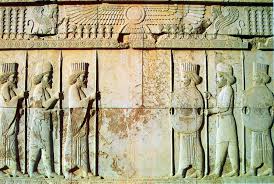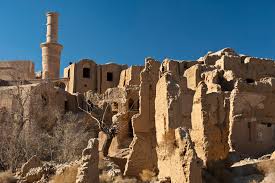This article describes the end of Persian Empire, its reasons and timeline.
The Persians built a new army, but two years later, they were defeated at Gaugamela. Darius was murdered (330) and Alexander started to reign as an Achaemenid king, keeping the empire together. After Alexander’s death in Babylon (11 June 323), his empire was divided into three parts.
End of Persian Empire
The Achaemenid Persian Empire was ended during the Wars of Alexander the Great, but Persian Empire arose again under the Parthian and Sassanid Empires of Iran, followed by Iranian post-Islamic Empires like Safavids.

Despite the Persians’ effective and conciliatory leadership, their empire did not last. Under King Xerxes in 480 B.C.E., the Persians made an attempt to expand their empire into Greece. The Greek city-states cooperated and held off the Persian threat and even succeeded in almost obliterating the Persian navy.
Persian Empire Start and End Dates
The Persian Empire lasted until its overthrow by the Greeks under Alexander the Great in 330 BC. During 332 BC, a battle occurred in the mountainous terrain surrounding the Gulf of Issus. Alexander after the capture of Tyre has crucified enormous numbers of the defenders.
He marched into Egypt where he was met as a new Pharaoh and founded the city of Alexandria. He made his way after Egypt to Mesopotamia where a final battle took place at Gaugamela in Mesopotamia which brought the Persian Empire to an end.
Persian Emperor Darius
Persian Emperor Darius III personally commanded his troops in the battle against Alexander, with an army that more than doubled the size of the Greeks. The mountainous landscape nullified the numbers advantage, enabling the Greeks to hand the Persians a decisive defeat. Darius III was forced to flee before Alexander and his guards.

Alexander continuing his expedition into heartlands of Persia captured the Persian capitals of Susa and Persepolis with all their wealth. Soon after the fall of Persian cities, Darius the king of Persia was murdered by two of his men and was replaced by Alexander the Great as king of Persia.
Near the end of the 5th century a new enemy, the barbaric Ephthalites, or “White Huns,” attacked Persia; they defeated the Persian king Firuz II in 483 and for some years thereafter exacted heavy tribute.
Persian Empire Facts
Kavadh I favored the communistic teachings of Mazdak (flourished the 5th century), a Zoroastrian high priest, and in 498 was deposed by his orthodox brother Zamasp. With the aid of the Ephthalites, Kavadh was restored to the throne in 501.
He fought two inconclusive wars against Rome, and in 523 he withdrew his support of Mazdak and caused a great massacre of Mazdak’s followers. His son and successor, Khosrau I, in two wars with the Byzantine emperor Justinian I, extended his sway to the Black Sea and the Caucasus, becoming the most powerful of all Sassanid kings.